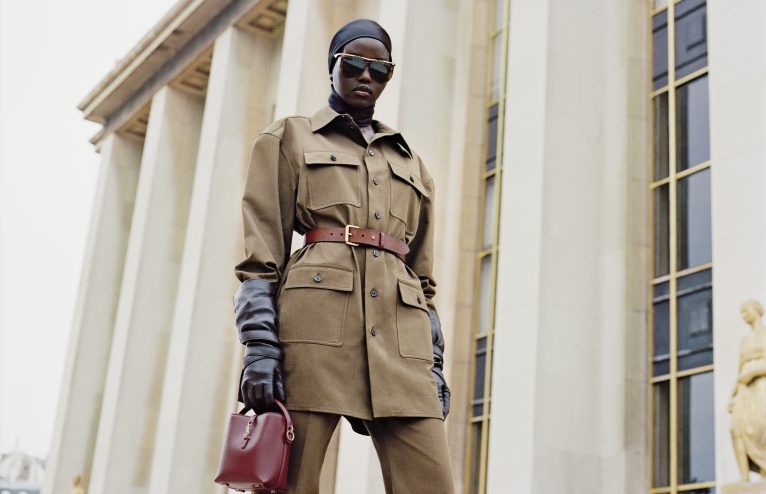Every woman is different but, when it comes to our periods, we’ve probably all had moments where it feels like our menstrual cycles are controlling how we go about our daily lives.
Luckily, as conversations about female health (finally) gather momentum, there’s never been more openness about this experience – and with more discussion comes more research. Now, leading female health experts are not just providing sexual health education: they are helping us ‘hack’ our menstrual cycles too, by advising us on the very best times to rest, exercise, power on at work, plus look after our skin and hair throughout the month.
Why is knowing your menstrual cycle important?
While we tend to focus on the time of menstruation itself, to really understand the broader effects of your cycle, you need to get to know all four stages.
“The menstrual cycle is an essential part of a woman’s life, as it reflects your physical and mental health,” explains the aesthetic doctor and hormone specialist Dr. Fiona MacRae. “Every woman has her own unique cycle, influenced by her physiology, lifestyle, and environment. The natural rise and fall of estrogen and progesterone throughout a cycle impact mood and energy levels, and may predict the best times of the month for travelling, exercising, resting, or studying.”
Anyone who has experienced hormonal acne will also know that understanding your cycle can help you predict (and eventually manage) your skin concerns too. “There are benefits to tracking your cycle, because being aware of when the various phases begin and end for you individually – and how these affect your skin – will help give the skin what it needs for optimal health during the different phases,” affirms the GP, functional medicine and hormone doctor Dr. Sohère Roked.
View this post on Instagram
The four stages
“The menstruation cycle is divided into menstruation, followed by the follicular phase, ovulation, and finally, luteal phase,” recaps Dr. Roked. “The phases of the cycle are the same for all women but the length in time of each phase can vary.”
Menstruation
Aka your period. Lasting between three to seven days, the menstrual phase sees a drop in the key sex hormones estrogen and progesterone, causing the lining of the uterus to shed. Alongside bleeding, it’s at this time you may experience symptoms such as cramps, mood changes and bloating.
Follicular phase
Starting on the first day of your period and ending with ovulation, the follicular phase lasts for around 11 to 27 days. During this time, your body releases a hormone that triggers your ovaries to mature and create follicles, in preparation to release an egg.
Ovulation
Occurring around 14 days into your cycle, ovulation occurs when the winning follicle from the follicular phase grows into a mature egg and is released, ready to be fertilised by sperm. Ovulation tends to last for 24 hours, but there’s a three to five day window when you are at your most fertile.
Luteal phase
The post-ovulation phase typically lasts 14 days, leading up to your period. Estrogen and progesterone levels increase, leading to a thickening of the uterus lining in preparation for an embryo. You may experience symptoms of premenstrual syndrome (PMS) during this time.
View this post on Instagram
How to hack your period
The best time to study: Follicular phase
“In the follicular phase, as estrogen levels rise, the body is full of energy and enthusiasm, making it the perfect time to focus on demanding intellectual tasks,” says Dr. Macrae. Try starting that project you have been putting off, or doing the tasks that you find most boring or difficult to do. “However, due to the fluctuations of hormones during the cycle, be mindful of your body’s reactions to prolonged periods of study.”
The best time to travel: Follicular phase
Travel is also probably best during the follicular phase. This is because it’s a time when fatigue is minimal and long-haul travel (and being away from home) can be most enjoyable.
The best time to exercise: Luteal phase
“When it comes to exercise, the early luteal phase may be the best time to hit the gym,” says Dr. Macrae. “During this phase, the body is energised due to rising progesterone levels. This is also the time when the body can handle more physical activity, making it ideal for intense workouts. As the luteal phase gradually fades, the body begins to lose energy, so one should be careful to avoid overexertion.”
The best time to dine out: Pre-menstruation
“Estrogen levels tend to rise during the first half of the menstrual cycle and then decrease in the week before menstruation. This drop in estrogen levels can impact the regulation of appetite and metabolism, potentially leading to an increase in hunger and food intake,” says Dr. Roked. However, instead of worrying about cravings and temporary increases in weight and bloating (caused by progesterone levels increases in the second half of your cycle too), this is the perfect time to enjoy your favourite foods and treat yourself by booking into a restaurant you really love.
The best time to rest: menstruation
“During the time of menstruation – when pains or heavy bleeding can be draining – low progesterone can reduce energy and brain function, so this is not a great time for studying or travelling,” says Dr. Macrae. “This is a time to be kind to yourself, to rest and recuperate.”
The best time for skin treatments: Follicular phase
“Oestrogen rises during the follicular phase and a rapid increase in oestrogen can be beneficial and hydrating for the skin. That’s why women often report their skin looks best at this phase,” says Dr Roked. “This could be the time to have facial treatments like peels, whereas pre-menstruation or during menstruation, individuals should opt for more calming facials. Using AHAs like glycolic acid can be a good exfoliant to stop pores getting clogged.”
View this post on Instagram
How to tweak your skincare throughout the month
“During the ovulation phase when oestrogen peaks, skin is more likely to glow, appearing clear and bright over the next five days, says Dr. Roked. “Progesterone is also my favourite hormone; it is made in the second half of the menstrual cycle after ovulation and is a girl’s best friend – from glowing skin to beautiful thick hair.”
However, “some women experience more acne around the lower face, or flushes of rosacea and redness in the luteal phase, so it’s a good time to use calming, and less active-ingredient products at that point,” continues Dr. Roked. “Your skin may also be more prone to breakouts before your period, so consider using a cleanser with salicylic acid. Finally, during the menstrual phase, loss of oestrogen and progesterone can make your skin dry, so this is a good time to hydrate well and to use face oils. Gentler ingredients at this time are beneficial for supporting the skin barrier too.”
Your period hacking kit
“The most important thing is to tune in with your own individual body clock, using one of the many menstruation apps or a simple diary,” advises Dr. Macrae. “By logging specific weeks of a cycle and identifying times of brain fog and drops in energy, you can build a picture which will allow for planning of various activities. This will help you to flow with your cycle, taking advantage of what the changing hormone levels bring in each phase.”
We may earn a commission if you buy something from any affiliate links on our site.
Lead image credit: Pexels




















Any Questions or Tips to add?